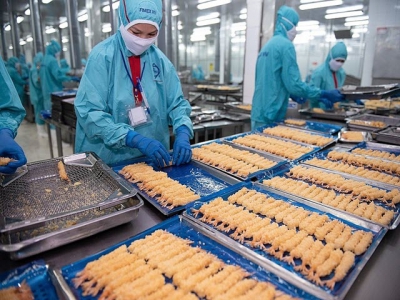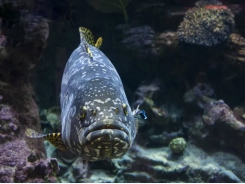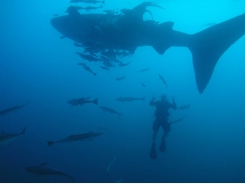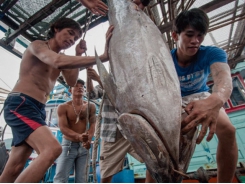Enjoy tax incentives from the EVFTA, Vietnamese shrimp need to improve their quality

The EVFTA cameinto effect from the beginning of August, bringing hope for Vietnamese shrimp exports to the EU market in the finalmonths of the year. However, to enjoy the tax incentives, shrimp exporters need to improve product quality.
Processing shrimp for export at Sao Ta Company - a member of PAN Group
Increased momentum thanks to EVFTA
The EU is Vietnam's fourth-largest shrimp importer after the US, Japan and China, accounting for 13.3 percent of Vietnam's total shrimp export value. Vietnamese shrimp exports to the EU decreased from March to June this year. However, exports to this market in July and August showed signs of a slight increase compared to the previous months and to the same period last year.
After decreasing from March to June this year, Vietnam's shrimp exports to the EU in July reached US$54.2 million, up 2 percent compared to July 2019. In the first half of August, exports of this item to the EU reached US$29.4 million, up 26 percent compared to the same period in 2019. Shrimp exports to the EU in August this year could jumpby about 20 percent compared to August 2019.
As soon as the EVFTA tookeffect, the export tax on some Vietnamese shrimp products to the EU hit zero, such as: Shrimp HS code 03061100 (currently at 12.5 percent); shrimp HS code 03061710 (currently at 20 percent) and shrimp HS code 03061791, 03061792, 03061793, 03061799 (currently at 12 percent).
Five years afterthe agreement took effect, the tax on shrimp HS code 03061794 will fallto zero from 18 percent. After seven years, taxes on shrimp HS code 16052110 (shrimp paste) and shrimp code HS 16052190 (other shrimp) will be cutfrom 20 percent to zero.
According to experts, Vietnam's shrimp exports to the EU from now until the end of the year will continue to increase, although the growth rate is not high due to the impact of the Covid-19 pandemic. Thanks to the tax advantage, EU importers also look for more sources from Vietnam. Deeply processed, packaged and ready-to-eat items for home consumption are still popular.
Commenting on the trend of the European shrimp market from now to the end of the year, experts said restaurants and food services are gradually reopening andthe tourism industry is also restarting. Shrimp importers in this segment and their suppliers are still under long-term pressure as the pandemic isn’t controlled. While retail or online sales continue to increase,the demand for shrimp for the retail segment will be even better when preparing for year-end holidays.
Guarantee quality reputation
In recent years, European consumers have become increasingly interested in sustainable products. When the Covid -19 pandemic occurred, this trend became even clearer. Europeans prioritiseproducts that are certified, ensuring not only sustainability, but also traceability, health, safe and hygienic production.
Currently, most high-end shrimp product distribution systems in the EU require ASC, but currently, the certified shrimp farming area in Vietnam is only about 6 percent of thetotal farming area.
The reason is that most of Vietnam's farmed shrimp are made bysmall businesses which cannot afford certification costs, only large farms can afford them. Therefore, to catch up with the incentives that EVFTA brings, the State needs to useincentive and priority measures to promote shrimp farming area to meet this standard.
According to Tran Quoc Luc, Chairman of Sao Ta Seafood Joint Stock Company, currently there are about 50 shrimp businesses. Each business may have multiple processing facilities. Processing facilities are available to all establishments; the other is their own techniques for each business and establishment. First of all, theymust pay attention to selecting standard ingredients and notlet cheap pricescloud the long term benefits. If all processors are aware of these issues, bad raw shrimp will not exist.
Along with that, shrimp farmers must make efforts to improve their knowledge and experience in farming. Especially in the current context, diseasesimpactingfarmed shrimp arequite stressful. Many farms with clean and intensive farming models have had very good results,but this model is difficult to replicate due to high capital and knowledge.
Vietnamese shrimp sold to Japan and South Korea account for the highest market share, although customs clearance in Japan is toughcompared to shrimp from Thailand and Indonesia. That is thanks to the beautiful design, fresh and delicious flavour, which is the common strength of shrimp exporting enterprises. It is also difficult to arrange processing to complete each order, export the fastest and inthe shortest rotation. But in fact, many customers complain about delivery delays from shrimp businesses.
At present, there are about 500 dealers involved in shrimp export, providing a huge marketing and sales team. At this very important link, the support from the Vietnam Association of Seafood Exporters and Producers connectsbusinesses to the market andcustomers through the largest seafood fairs in the world every year.
At the same time, for favourable marketing and sales, businesses need to focus on building their brands. Thereby improving efficiency and competitiveness andjoining the global value chain, as the global supply chain is more and more extensive. Sucheffortsfrom each enterprise will contribute to making the shrimp industry become a strong economic sector.
Related news
Tools

Phối trộn thức ăn chăn nuôi

Pha dung dịch thủy canh

Định mức cho tôm ăn

Phối trộn phân bón NPK

Xác định tỷ lệ tôm sống

Chuyển đổi đơn vị phân bón

Xác định công suất sục khí

Chuyển đổi đơn vị tôm

Tính diện tích nhà kính

Tính thể tích ao




 Experiment of intensive black tiger shrimp practice in…
Experiment of intensive black tiger shrimp practice in…  Tuna exports to EU surge thanks to trade…
Tuna exports to EU surge thanks to trade…